What Hi-Fi? Verdict
Samsung’s latest flip phone has a handful of greatly appreciated AV features, and it handles movies and music well – though its rivals are a bit more considered and authentic
Pros
- +
Crisp, detailed and three-dimensional picture
- +
Extensive feature set
- +
Sturdy and attractive design
Cons
- -
Display could be brighter
- -
Beaten for cinematic authenticity
- -
Sound lacks some warmth and nuance
Why you can trust What Hi-Fi?
Flip phones are in fashion, the latest Fantastic Four blockbuster is taking the box office by storm, and Oasis are on tour; hard to believe it's somehow 2025 and not the noughties.
Flip phones, however, look quite different nowadays, as evidenced by the Samsung Galaxy Z Flip 7, which we have before us today.
The company’s foldable line has come a long way since its inception with 2019’s Galaxy Z Fold. Six years on from that experimental stage, the Korean tech giant treats these bendy smartphones with the same reverence as its long-running Galaxy S lineup.
It seems to have learned a lot since its first generation, which makes the Z Flip 7 one of its most compelling foldable smartphones to date. That’s good news indeed, considering it’s following two particularly excellent handsets from the brand.
Last year’s Z Fold 6 proved to be one of the biggest surprises of the year, thanks to its impressive display and audio performance, while the video upscaling feature introduced on the Galaxy S25 Ultra ensured a five-star score for that premium handset.
So, can the Z Flip 7 hold a candle to these impressive smartphones when it comes to AV duties?
Price

The Samsung Galaxy Z Flip 7 officially starts at £1049 / $1100 / AU$1799 for the 256GB model, though a 512GB model is also available for £1149 / $1220 / AU$1999. Both models feature 12GB of RAM and Samsung’s Exynos 2500 processor.
The latest hi-fi, home cinema and tech news, reviews, buying advice and deals, direct to your inbox.
The Z Flip 7 is priced squarely in the premium sector, then. It’s slightly cheaper than the Galaxy S25 Ultra (£1249 / $1300 / AU$2199), though it's pricier than the Award-winning Apple iPhone 16 Pro (£999 / $999 / AU$1799).
Perhaps the best comparison is with the iPhone 16 Pro Max, which costs from £1199 / $1199 / AU$2149.
Build
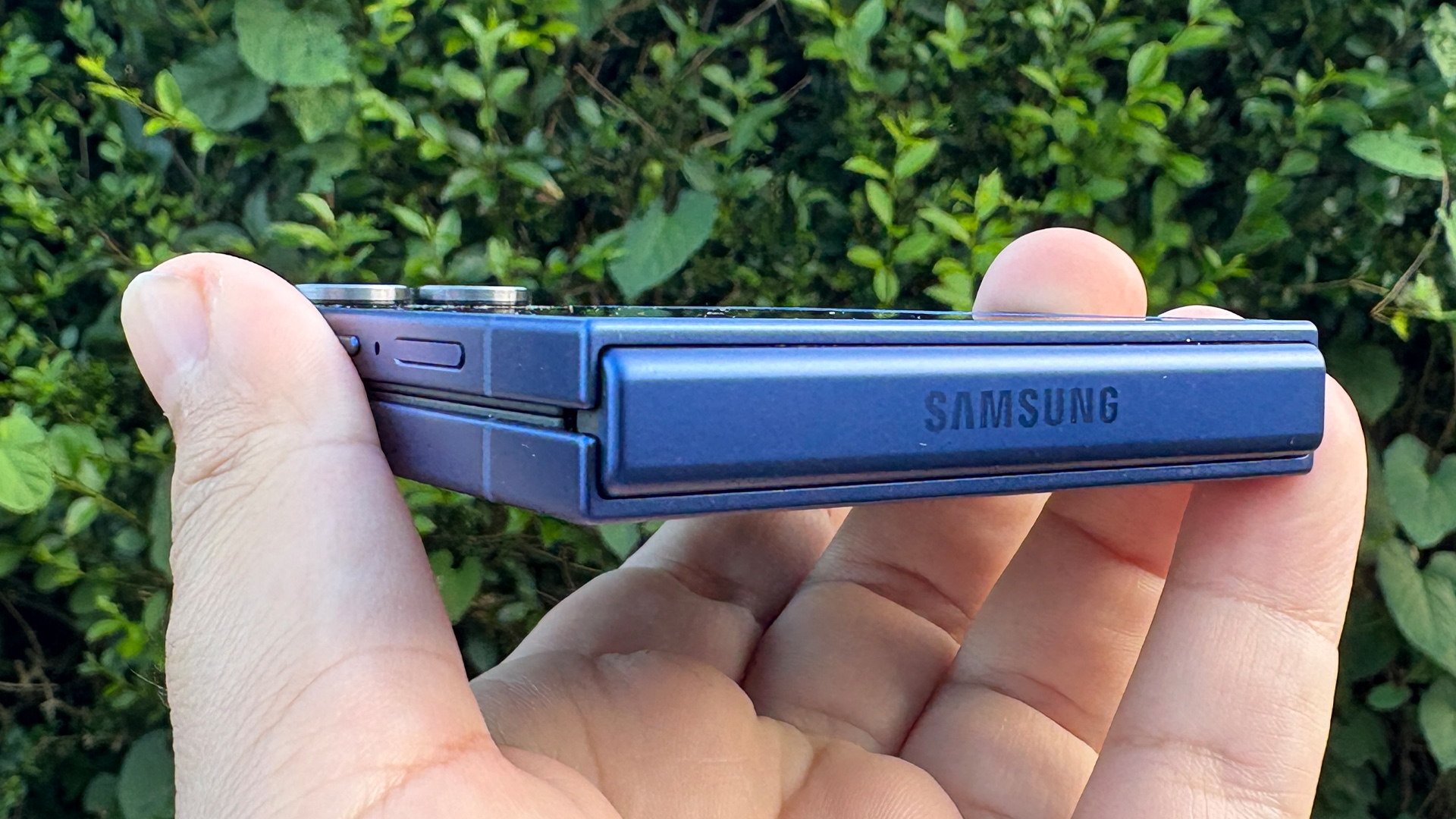
If it wasn’t immediately clear, this is a foldable phone, which means that the design itself is a key feature.
This is a clamshell-style flip phone, reminiscent of the flip phones from the early 2000s. That means you can snap the phone shut after a phone call if you’re feeling particularly sassy.
Unlike the flip phones of old, the outer surface of the Z Flip 7 features a 4.1-inch edge-to-edge Dynamic AMOLED 2X display, which can be used to interact with a range of applications or access key information at a glance, such as the weather or calendar entries.
Our favourite use for this display, however, is interacting with the media controls while streaming music. There’s something pleasing about having a palm-sized portable music player, which makes us yearn for the days of iPods.
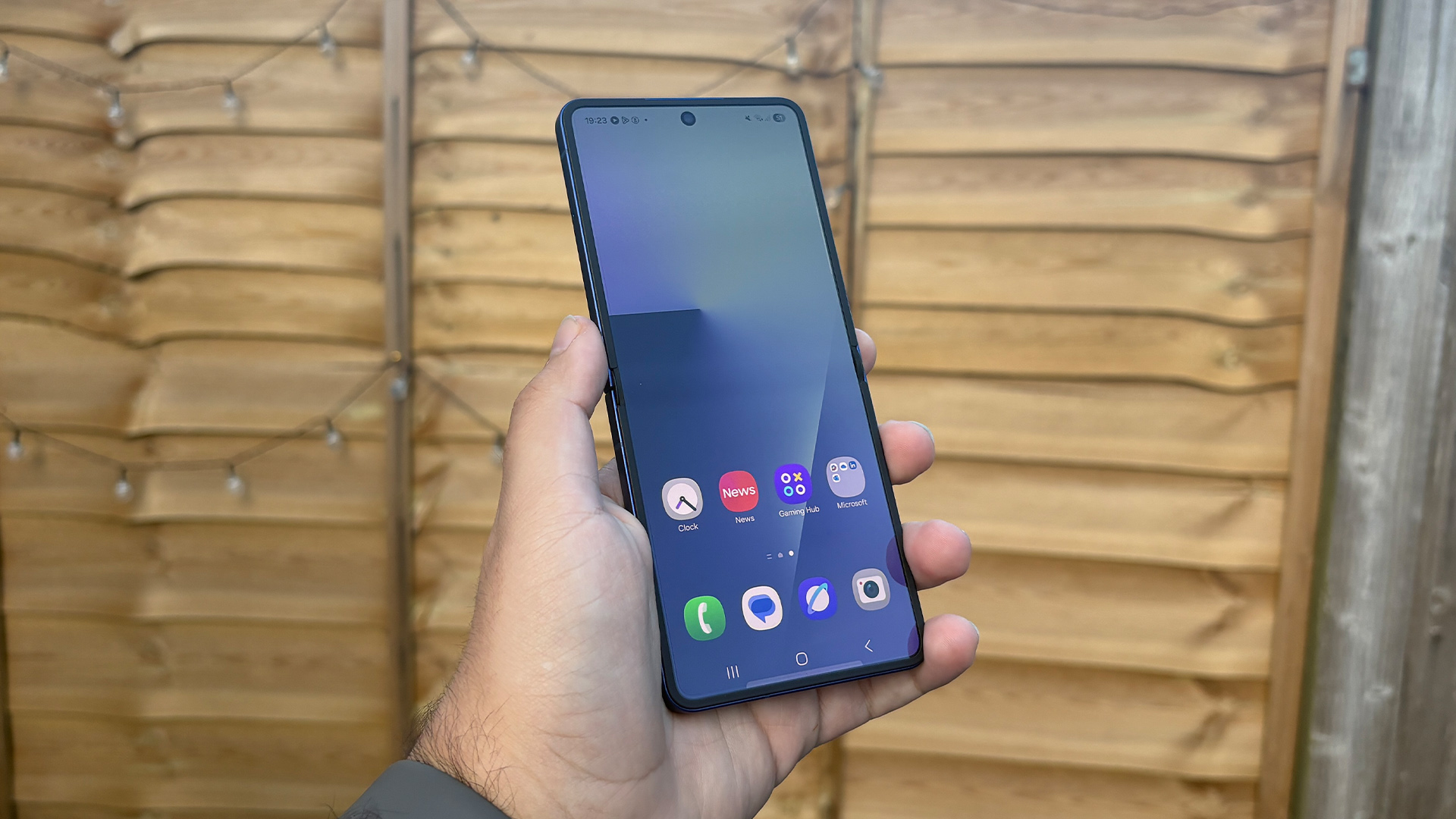
Screen size 6.9-inch
Screen type Dynamic AMOLED
Screen resolution 1080 x 2520 (397 ppi)
Finishes Jetblack, Coral Red, Shadow Blue and Mint (Samsung store exclusive)
Operating system Android 16 (One UI 8)
Storage 256GB / 512GB
RAM 12GB
Unfolding the phone reveals a 6.9-inch Dynamic AMOLED 2X display, which sports a crucial video-focused feature that we’re thrilled to see – a 21:9 aspect ratio.
That’s the classic ratio for movie content. Sony used to be the champion of this, but it has unceremoniously ditched 21:9 for its recent flagship Xperia devices.
Implementing this into a foldable form factor, as Samsung has done, makes a lot of sense, as the long, slender chassis of previous 21:9 phones made them a bit awkward to carry around.
A compact shell that can be folded in half for enhanced pocketability is a smart move that also satisfies our AV priorities.
This is also a particularly slim phone. It's not quite as slender as the razor-thin Z Fold 7, but at just 13.7mm when folded and 6.5mm unfolded, the Z Flip 7 is an unquestionably slender smartphone.
Despite the slim design, Samsung has made sure to keep its latest smartphone rugged thanks to its Aluminium Armour frame, as well as Corning Gorilla Glass Victus 2 covering the fragile glass elements to help reduce the likelihood of scratches or cracks.
The hinge has been upgraded, too, with Samsung touting its latest generation Armour FlexHinge as being more durable than ever before. It also provides a tighter seal when the device is closed, as well as a smoother folding action.
On the subject of the folding mechanism, we should also point out that Samsung has taken huge strides in reducing the screen crease, to the extent that it’s barely noticeable to the eye or the touch.
Finally, with four finishes to choose from – Jetblack, Coral Red, Shadow Blue and Mint – it's a stylish phone too. We have the Shadow Blue model, which looks rather smart thanks to the metallic shine that shifts the colour when light hits it.
The one blemish on the design front is that the Z Flip 7 is an absolute fingerprint magnet, with the internal screen picking up smudges with frustrating ease.
Features
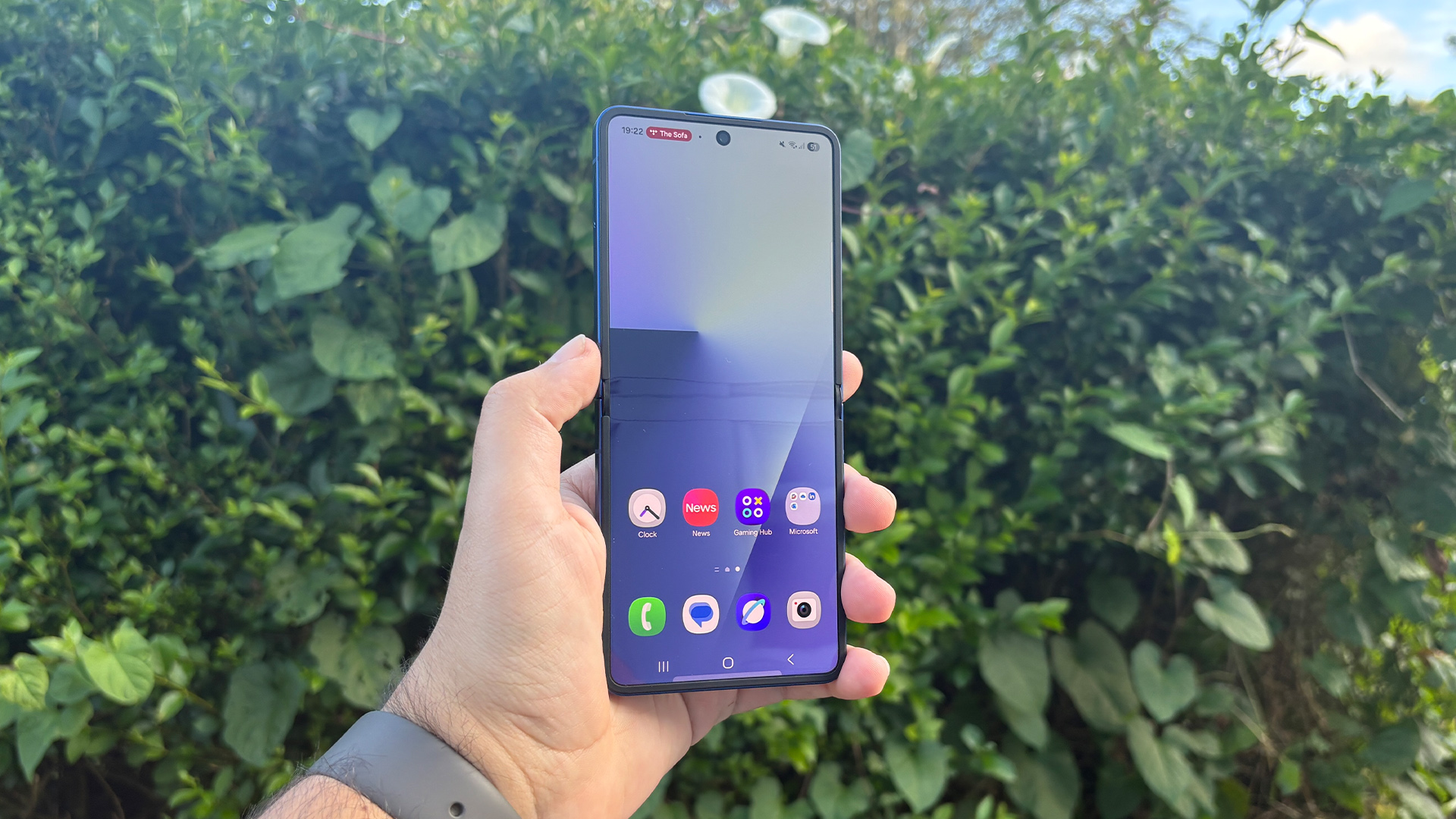
Samsung’s smartphones have boasted famously extensive feature sets in recent years. And they have only grown in the last 18 months, thanks to the unwavering onslaught of AI integration.
The Galaxy AI suite is, as expected, featured on the Flip 7, with the likes of Circle to Search with Google, Live Translation, Writing Assist, and a wide range of photo and video editing tools.
The list seems to grow continually, and Samsung has previously updated existing models with new AI features, so in all likelihood the Flip 7 will become even more AI-ified over time.
Samsung has, in fact, promised to deliver seven years of software upgrades to the Flip 7.
While AI tricks are fine and useful, we’re much more interested in AV performance. The main display features a resolution of 2520 x 1080, with a pixel density of 397ppi.
It’s an OLED display, which is ideal for deep, convincing blacks, and while the 1080p resolution may seem off-putting in a world of 1440p devices, we can assure you that the display is plenty sharp enough.
As we’ve already mentioned, the Z Flip 7 features a 21:9 aspect ratio, which is practically perfect for watching a large variety of films, thanks to the fact that the black letterbox bars are totally eliminated. 16:9 content is where things get a bit trickier, however, as sizable black pillar bars are added to the left and right of the image.
Both the internal and external displays feature Samsung’s Dynamic AMOLED 2X technology, so they support variable refresh rates up to 120Hz. This makes gaming and interacting with the UI feel great, and the screen can intelligently drop the frame rate when it comes to static content; for example, if you’re reading a webpage on your phone.
The cover and main displays are both officially rated at 2600 nits peak brightness, though the main screen gets a major AV boost in the form of HDR10+ support. Practically all of the major streaming services now support HDR10+ content in some form or other, including Netflix and Disney+, which both adopted the format recently.
Dolby Atmos audio is also supported via the phone’s stereo speakers (formed of a downward-firing speaker and the earpiece), as well as through wired and wireless headphones.
There is no headphone jack, unsurprisingly, but you can hook wired cans up to the phone via a 3.5mm to USB-C adapter. Wireless audio is also available over Bluetooth 5.4 with the A2DP and LE codecs supported.
As for the remaining features, the Z Flip 7 sports three cameras in total: a 50MP main lens, a 12MP ultrawide lens and a front-facing 10MP camera. The joy of the Flip series is that you can use the main high-quality camera as a selfie shooter thanks to the cover screen, which can be used as a viewfinder.
Camera performance is solid on the Flip 7, with colourful, punchy and crisp images that should suffice for anyone who carefully cultivates their Instagram profile.
Rounding things out with the battery, Samsung has upped the capacity to 4300mAh, which is apparently the biggest battery in a Z Flip device so far. It claims 31 hours of video playback. In real-life terms, we find that it can easily make it through a day with moderate to heavy use, including music and movie streaming.
Picture
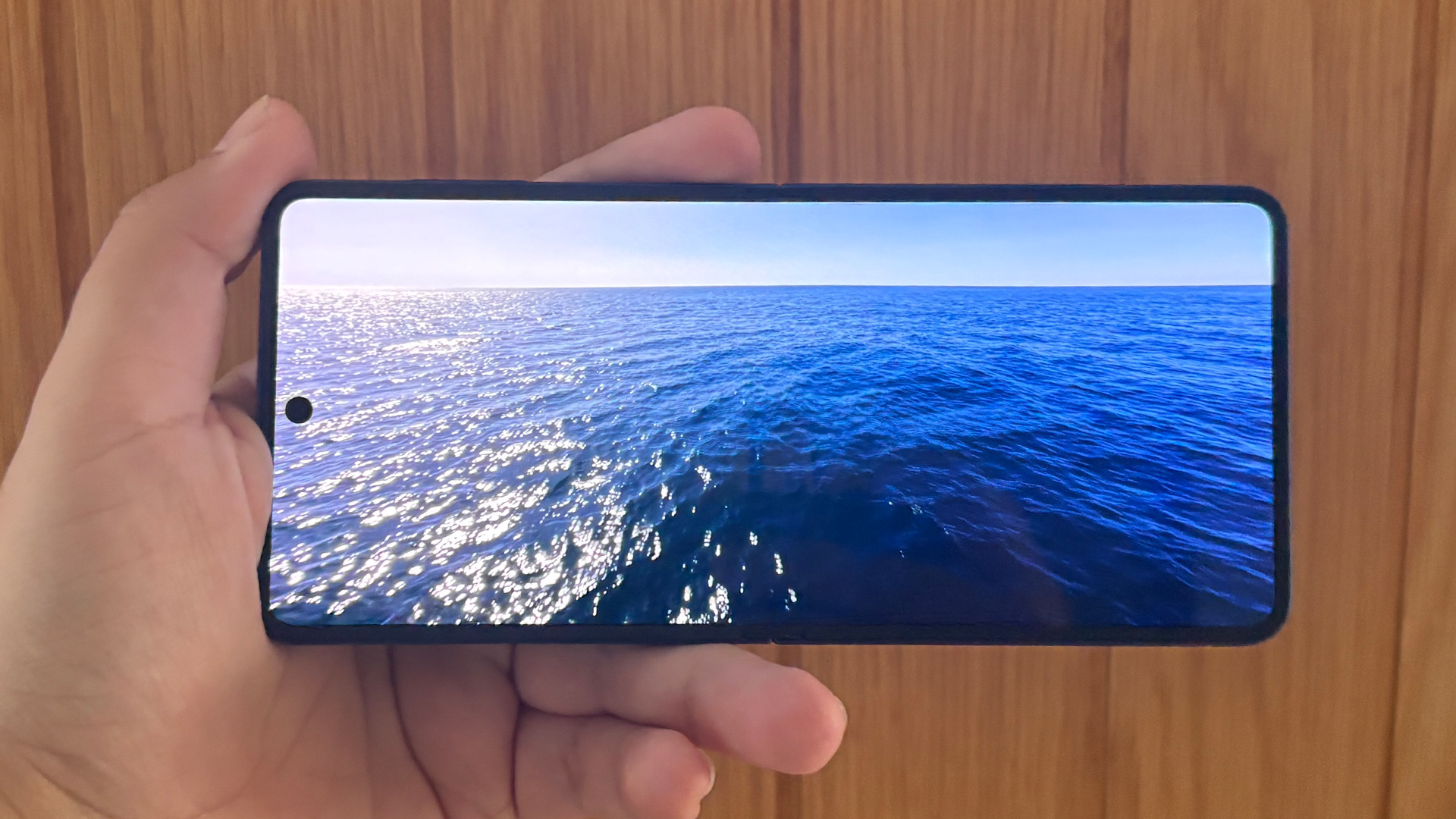
We’ve already established that the Z Flip 7’s main display is particularly well-suited to watching movies in terms of specs and dimensions, but how does its picture performance hold up? We stream a range of content from the likes of Netflix, Amazon Prime Video and Disney+ to the device, and find that it's impressive, but not without flaws.
We find the best results when pairing the device with some cinematic content that fills the 21:9 aspect ratio, such as Mission Impossible: Dead Reckoning on Netflix. Here we find that the Z Flip 7 produces a crisp and detailed image, with a nice sense of three-dimensional depth.
There is tangible detail to the fabric of the suits worn by the gang of operatives, as well as to skin texture. Skin tones are perhaps a touch on the vivid side, but generally speaking, the display handles colours well, albeit not entirely authentically.
Users can choose between a vivid and natural colour preset – we lean towards the latter for our testing, though we do appreciate the ability to tweak the colour temperature in the default Vivid mode. The Natural preset, however, is the more accurate overall.
On motion, we find that a couple of panning shots in Blade Runner 2049 stutter briefly, but broadly speaking, motion is fine. Moving objects, such as Officer K’s scout drone in the opening sequence of the film, glide with relative smoothness.
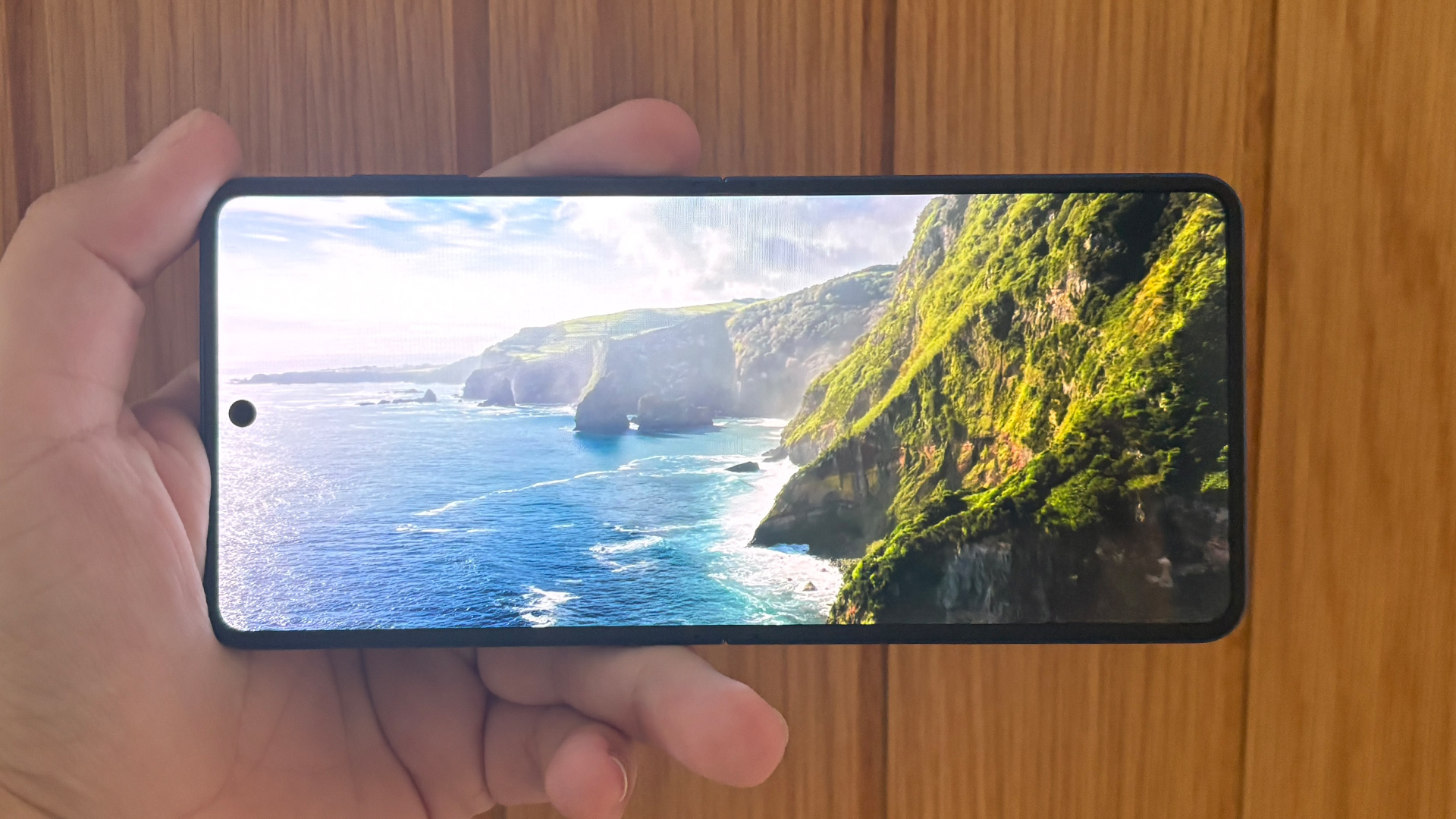
One area where the Z Flip disappoints is, strangely, brightness. As we’ve established, the display is rated to a peak brightness of 2600 nits, the same as the Galaxy S25 Ultra. However, placing the two handsets side by side reveals that the S25 Ultra is clearly brighter.
In isolation, it’s still evident that the Z Flip 7’s display is quite dim, even with auto brightness switched off and the extra brightness setting enabled. That dimness robs the picture of some of its impact.
Getting back on track, we’re happy with how the Z Flip handles dark details. Areas of Sapper Morton’s farmhouse in Blade Runner 20249 that are bathed in shadow don’t entirely hide the piano, armchair or sofa, allowing us to dig out a good bit of detail here.
While we generally approve of the Z Flip’s picture performance, it doesn’t quite compare to another five-star handset on the market. The iPhone 16 admittedly doesn’t feature a nifty folding form factor, but it does deliver a richer and more cinematic experience.
We prefer the slightly warmer tone that the iPhone delivers, and contrast is also better on the Apple smartphone. It also happens to cost considerably less. Admittedly, those dedicated to the Google operating system likely won’t give the iPhone a second look, but it's worth considering if you’re open to iOS.
Sound

Samsung’s recent batch of smartphones has sounded good, rather than great, and the Z Flip 7 is no exception. Loading Tidal on the phone and plugging in a pair of wired headphones, we find the Z Flip checks plenty of boxes, but it doesn’t necessarily go above and beyond.
Using a range of test tracks from the likes of Hans Zimmer, Aurora, Kansas, Taylor Swift and Hozier, we find that the Z Flip reliably delivers a crisp and detailed sound, with a solid sense of timing.
Voices sound clean and natural, and there is a decent sense of spatial separation between the voices and individual instruments of the test tracks we opt for. Switching on the Dolby Atmos audio feature heightens (pun intended) this effect, with an even more open feel to the sound, though it does lose a touch of focus in the process.
When it comes to dynamics and subtlety, we actually consider it to be better than the pricier S25 Ultra, which can sound strained at higher volumes and a bit flat when the volume isn’t pumped up.
However, it's the iPhone 16 that once again steals the spotlight, as it offers a richer, more natural, and harmonious sound. Instruments feel more textured, and voices are more detailed with greater importance placed on low-level dynamics, resulting in a more emotive performance.
Verdict

Foldable phones have quickly matured during their relatively short time on the smartphone scene, and the Samsung Galaxy Z Flip 7 cements this notion. It’s interesting enough to stir conversation when you whip it out of your pocket, but it’s conventional enough that you don’t have to adjust too greatly if you’re coming from a “normal” phone.
For those looking to make it their new portable movie and music consumption device, we think it’s a solid offering with some thoughtful additions, namely the 21:9 display and the ability to use it as a compact music player when folded.
That being said, the Z Flip 7 just misses the mark on pure picture and sound performance, so stick to the traditional non-flexible smartphones if a five-star AV experience is what you’re after.
SCORES
- Picture 4
- Sound 4
- Features 5
MORE:
Read our review of the Samsung Galaxy S25 Ultra
Also consider the Apple iPhone 16
Read our Apple iPhone 16 Pro review
Best smartphones: the best phones for music and movies
Lewis Empson is a Senior Staff Writer on What Hi-Fi?. He was previously Gaming and Digital editor for Cardiff University's 'Quench Magazine', Lewis graduated in 2021 and has since worked on a selection of lifestyle magazines and regional newspapers. Outside of work, he enjoys gaming, gigs and regular cinema trips.
- Alastair StevensonEditor in Chief
You must confirm your public display name before commenting
Please logout and then login again, you will then be prompted to enter your display name.

